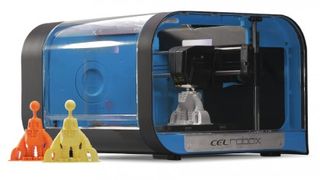Is 3D printing just a fad – or is the best yet to come?
Investors are losing confidence, but the industry is carving a niche

Is it anyone's fault if the industry they work for gets overhyped, saddled with huge expectations for immediate profit, consequently overvalued, and then suffers a mini-crash as investors realise it's not quite the overnight sensation they had hoped for?
Nowhere is there more convincing evidence of a 'tech bubble' than in 3D printing, which hasn't revolutionised every factory on the planet, and nor has it found its way into homes. Investors' loss of patience has led to declining share prices for 3D printing companies throughout 2015, and staff lay-offs.

High expectations
The reason for the drop in confidence in 3D printing? Expectations were way, way too high, and a market realignment was inevitable, say some. "People expect 3D printing to be the start of some kind of 'sci-fi' lifestyle [and] assume that in the future they will be able to 3D print everything in their lives," says Peter Wallace, Managing Director of Instant Print W1. Sadly, this really isn't the case at all. "Some of the greatest 3D printing jobs have been done by trained professionals and have taken weeks, sometimes months – it's not as simple as plug it in and play," adds Wallace.
So is the industry struggling? "A more accurate assessment of the industry might note it to be 'struggling against lofty expectations'," says Chris Connery, VP of Global Analysis at Context, who points out that sales of industrial 3D printers are only down by 1% on 2014, while desktop 3D printers for homes are up 56%.
Connery remains bullish on the long-term outlook for the industry, with his company forecasting the entire market – hardware, materials and services – to grow from just under $4 billion (around £2.6 billion, or AU$5.6 billion) in 2014 to $15.8 billion (around £10.3 billion, or AU$22 billion) in five years.

Massive hype
However, it was always going to be difficult for 3D printing to live up to the massive hype. "When 3D printers first hit the headlines, articles were written which led people to believe that they would soon have their own Star Trek-style replicator in their living room, that factories in China would shut en masse and that they need never walk to the shops again," says Chris Elsworthy, CEO of CEL and creator of the Robox 3D printer, who thinks those scenarios are a long way off.
"We need to be emphasising the amazing things 3D printers are doing today, not what they might be doing in 10 years' time," he adds, zeroing-in on the rapid prototyping by startups that 3D printers allow.
Are you a pro? Subscribe to our newsletter
Sign up to the TechRadar Pro newsletter to get all the top news, opinion, features and guidance your business needs to succeed!
Is 3D printing only for making prototypes?
"If you want to quickly create an inexpensive prototype then it is invaluable … this shouldn't demean the technology," says Wallace, though it's actually nothing new. "3D printing, or additive manufacturing, has existed since the 1980s and has mainly been used for rapid prototyping," says Jonathan Wilkins, marketing director of European Automation. "The 3D printing industry is now facing the challenge of expanding into serious production – the industry is at the stage where fully functional products can be printed in a variety of materials, but for the time being, additive manufacturing is a complementary manufacturing tool, meant to be used in combination with more traditional technologies."
Jamie is a freelance tech, travel and space journalist based in the UK. He’s been writing regularly for Techradar since it was launched in 2008 and also writes regularly for Forbes, The Telegraph, the South China Morning Post, Sky & Telescope and the Sky At Night magazine as well as other Future titles T3, Digital Camera World, All About Space and Space.com. He also edits two of his own websites, TravGear.com and WhenIsTheNextEclipse.com that reflect his obsession with travel gear and solar eclipse travel. He is the author of A Stargazing Program For Beginners (Springer, 2015),
Most Popular

